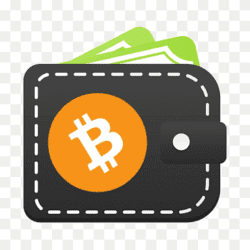The Importance Of Token Emission For Investing In DeFi Projects

Token emission, in the context of investing in DeFi projects (decentralized finance), refers to the process by which new tokens are created and distributed to participants or stakeholders within a particular project or protocol. It is a mechanism used by DeFi projects to incentivize and reward various actors for their contributions to the ecosystem. Token emissions can take various forms depending on the project’s design and goals.
Here are some common examples of token emission mechanisms in DeFi projects:
1. Initial Coin Offering (ICO): In an ICO, a project offers a limited supply of tokens to the public for sale. Participants who invest in the project during the ICO phase typically receive tokens in proportion to their investment. The token price and allocation details are usually predetermined by the project team.
2. Airdrops: Airdrops involve the free distribution of tokens to individuals who meet certain criteria, such as holding a specific token or being an active user of a particular platform. Airdrops are often used to increase awareness, reward early adopters, or incentivize specific actions within the ecosystem.
3. Liquidity Mining: Liquidity mining, also known as yield farming, is a popular token emission mechanism in DeFi. It involves users providing liquidity to a decentralized exchange (DEX) or lending platform by depositing their tokens into a liquidity pool. In return for their contribution, users are rewarded with additional tokens from the project. The number of tokens received typically depends on the amount of liquidity provided and the duration of participation.
4. Staking Rewards: Staking allows users to lock up their tokens in a smart contract for a specified period to support network security, governance, or other functions. In return for staking their tokens, participants earn additional tokens as rewards. The rewards are often based on factors such as the duration of the stake, the amount of tokens staked, and the project’s inflation rate.
5. Governance Incentives: Some DeFi projects distribute tokens to participants who actively participate in governance activities, such as voting on proposals or contributing to the project’s development. These incentives aim to encourage community engagement and decision-making, aligning the interests of token holders with the project’s success.
It’s important to note that token emission models vary significantly across different DeFi projects. The distribution mechanisms, token allocation schedules, and emission rates are determined by the project’s design and goals. Investors interested in participating in DeFi projects should carefully review the project’s whitepaper, tokenomics, and emission model to understand how tokens are created and distributed and how these mechanisms may impact the value and utility of the tokens they acquire.
State of Cryptocurrency and DeFi
It’s important to note that the cryptocurrency and DeFi landscape is dynamic and subject to change. Nevertheless, I can provide an overview of the state of cryptocurrency and DeFi up until September 2021.
Cryptocurrency:
1. Increased Adoption: Cryptocurrency adoption has been on the rise, with a growing number of individuals, institutions, and even governments recognizing and using cryptocurrencies. Major cryptocurrencies like Bitcoin (BTC) and Ethereum (ETH) have gained widespread recognition, and various companies have started accepting cryptocurrencies as a form of payment.
2. Market Volatility: Cryptocurrency markets have exhibited significant volatility, with prices experiencing dramatic fluctuations. This volatility is attributed to factors such as market speculation, regulatory developments, macroeconomic events, and investor sentiment. It’s important for investors to be aware of the risks associated with investing in cryptocurrencies.
3. Institutional Involvement: Institutional interest in cryptocurrencies has grown significantly. Several major financial institutions, including investment banks, asset management firms, and insurance companies, have started offering cryptocurrency-related products and services. Additionally, some institutional investors have allocated a portion of their portfolios to cryptocurrencies as a hedge or alternative investment.
4. Regulatory Landscape: The regulatory environment for cryptocurrencies varies across jurisdictions. Some countries have embraced cryptocurrencies, providing regulatory frameworks that promote innovation and consumer protection. However, others have expressed concerns about potential risks, such as money laundering, fraud, and investor protection, leading to stricter regulations or bans on certain cryptocurrency activities.
DeFi:
1. Expanding Ecosystem: DeFi has witnessed substantial growth, both in terms of the number of projects and the total value locked (TVL) in DeFi protocols. DeFi refers to a set of financial applications and platforms built on blockchain networks, primarily Ethereum, that aim to provide decentralized alternatives to traditional financial services like lending, borrowing, trading, and yield farming.
2. Decentralized Exchanges (DEXs): DEXs have gained popularity as they allow users to trade cryptocurrencies directly from their wallets without relying on intermediaries. These exchanges operate through smart contracts, enabling users to maintain control over their funds and trade assets in a non-custodial manner.
3. Yield Farming and Liquidity Mining: Yield farming and liquidity mining have become significant components of DeFi. Users can lend or provide liquidity to DeFi protocols and receive tokens or rewards in return. This mechanism incentivizes users to contribute to the liquidity and growth of these platforms, while also offering the opportunity to earn additional tokens.
4. Security and Smart Contract Risks: While DeFi offers numerous opportunities, it is not without risks. Smart contract vulnerabilities and security incidents have been a concern, resulting in financial losses for some users. It is crucial for participants to conduct thorough due diligence, including reviewing audits and understanding the risks associated with each protocol.
5. Regulatory Challenges: DeFi’s decentralized nature poses challenges for regulators as they attempt to apply existing financial regulations to this emerging sector. The regulatory response to DeFi has been mixed, with some jurisdictions taking a cautious approach and others actively exploring ways to regulate and provide legal clarity to the industry.
It’s worth noting that the cryptocurrency and DeFi landscape is highly dynamic, and developments in technology, regulation, and market sentiment can significantly impact their state. It’s important for investors and participants to stay updated on the latest developments and exercise caution when engaging with cryptocurrencies and DeFi protocols.
Also read: The Rise Of DeFi And Its Contribution To The Growth Of Cryptocurrency: Advantages & Disadvantages
Importance of tokenomics in Crypto and DeFi
Tokenomics refers to the economic and financial aspects of a cryptocurrency or token. It encompasses the design, distribution, and management of the token within a particular ecosystem. In the context of cryptocurrency and decentralized finance (DeFi), tokenomics plays a crucial role in shaping the project’s sustainability, utility, value, and overall success. Here’s a detailed explanation of the importance of tokenomics in crypto and DeFi:
1. Incentivizing Participation: Tokenomics is instrumental in incentivizing various participants within the ecosystem. By offering tokens as rewards, participants are motivated to contribute their resources, such as liquidity, computing power, or governance participation. This helps bootstrap the ecosystem, encourages engagement, and aligns the interests of different stakeholders.
2. Governance and Decision-Making: Many DeFi projects incorporate governance features that allow token holders to participate in decision-making processes. Tokenomics plays a critical role in determining voting power, proposal submission, and governance rewards. Well-designed tokenomics can ensure a fair and decentralized governance structure, empowering the community to collectively shape the project’s future.
3. Liquidity and Network Effects: Tokenomics can facilitate liquidity within a DeFi ecosystem. By designing incentives for users to provide liquidity or stake their tokens, projects can create vibrant and liquid markets. This liquidity attracts more participants, enhances the network effect, and enables efficient trading, lending, and borrowing activities.
4. Value Capture and Token Utility: Tokenomics helps capture and distribute value within a decentralized system. Tokens can serve various functions, such as granting access to platform features, paying for transaction fees, or representing ownership in the project. Tokenomics determines the token’s scarcity, utility, and the mechanisms for capturing value generated within the ecosystem.
5. Sustainability and Funding: Tokenomics plays a vital role in ensuring the sustainability and funding of crypto and DeFi projects. Token sales, initial coin offerings (ICOs), or token sales can provide initial funding for project development. Subsequently, the tokenomics model, such as transaction fees or inflation mechanisms, can generate ongoing revenue to support operations, future development, and community initiatives.
6. Token Distribution and Fairness: Tokenomics can address concerns of token distribution and fairness. By designing token emission mechanisms, such as airdrops or liquidity mining, projects can distribute tokens to a wider audience and incentivize early adopters, active users, or participants who contribute to the ecosystem. This can help create a more inclusive and diverse community.
7. Economic Alignment: Properly designed tokenomics aligns the economic incentives of all participants within the ecosystem. It ensures that the interests of users, developers, investors, and other stakeholders are aligned with the project’s success. This alignment promotes long-term engagement, collaboration, and value creation.
8. Regulatory Considerations: Tokenomics can also address regulatory considerations by ensuring compliance with relevant laws and regulations. By incorporating mechanisms to prevent money laundering, fraud, or other illicit activities, tokenomics can help projects navigate the regulatory landscape and foster trust among users and regulators.
It’s important to note that designing effective tokenomics is a complex task that requires careful consideration of various factors, including project goals, community dynamics, regulatory compliance, and the specific needs of the ecosystem. Tokenomics should be transparent, fair, and well-balanced to foster long-term sustainability and maximize the potential of the crypto and DeFi project.
Also read: Tokenomics 101: Single-Token Blockchain Games On GameFi
Crucial merits for tokenomics
Tokenomics, the economic and financial structure of a cryptocurrency or token, encompasses various crucial merits that contribute to the success and sustainability of a project. Here are some key merits associated with well-designed tokenomics:
1. Incentivizing Participation: Tokenomics creates incentives for various participants to engage and contribute to the ecosystem. By offering tokens as rewards for specific actions or contributions, such as providing liquidity, staking, or participating in governance, tokenomics motivates users to actively participate, thereby fostering a vibrant and engaged community.
2. Network Effect and Liquidity: Tokenomics helps create a network effect by attracting more participants to the ecosystem. By incentivizing users to hold and use the token, tokenomics can increase liquidity within the platform, leading to more efficient markets, better price discovery, and enhanced user experience.
3. Value Capture and Token Utility: Tokenomics ensures that value generated within the ecosystem is captured and distributed to token holders. Tokens can have utility within the platform, granting access to services, features, or discounts. This utility creates demand for the token, driving its value. Tokenomics models, such as transaction fees or burning mechanisms, can capture a portion of the value generated and redistribute it to token holders, further increasing their stake in the project’s success.
4. Governance and Decision-Making: Tokenomics can enable decentralized governance, giving token holders a say in the project’s future. Tokens can represent voting power, allowing holders to participate in decision-making processes such as protocol upgrades, parameter adjustments, or fund allocation. This democratic governance fosters community involvement, aligns the interests of stakeholders, and helps build trust and consensus within the ecosystem.
5. Fair Distribution and Accessibility: Tokenomics offers the opportunity for fair and inclusive token distribution. Through mechanisms like airdrops, token sales, or liquidity mining, projects can distribute tokens to a wide range of participants, including early adopters, active users, or contributors to the ecosystem. This fair distribution ensures wider ownership and accessibility, reducing concentration of tokens in the hands of a few and promoting decentralization.
6. Economic Alignment: Well-designed tokenomics aligns the economic incentives of all participants within the ecosystem. Token holders benefit from the project’s success, encouraging them to support and contribute to its growth. Developers and contributors are rewarded for their efforts, attracting talent and fostering innovation. Investors can participate in the project’s success through token appreciation, dividends, or other mechanisms. This alignment creates a cooperative and mutually beneficial environment for all stakeholders.
7. Funding and Sustainability: Tokenomics provides a means of funding and sustaining the project. Initial token sales, ICOs, or token generation events can generate capital for project development. Ongoing revenue streams, such as transaction fees or inflation mechanisms, can support operations, ongoing development, and community initiatives, ensuring the project’s long-term viability and sustainability.
8. Regulatory Compliance and Transparency: Tokenomics can address regulatory considerations by incorporating mechanisms to ensure compliance with relevant laws and regulations. By implementing measures to prevent money laundering, fraud, or other illicit activities, tokenomics can help projects navigate the regulatory landscape and foster transparency, trust, and legitimacy among users, investors, and regulators.
It’s important to note that tokenomics must be carefully designed and tailored to the specific project’s goals, community dynamics, and regulatory requirements. A well-crafted tokenomics model can create a robust and thriving ecosystem, attracting users, developers, and investors, while aligning their interests and driving the project’s success.
🚨🐸 Beware! Rumor has it there's a gang of #web3 @TheMuppethShow with a low IQ on a mission to crash their project to zero! 👀 Steer clear & avoid these troublemakers at all costs. They claim to be a community, but they're the epitome of worstness! This is how they look 👇 pic.twitter.com/KhNQTIg7IW
— AnjiEco ⚙️ (@AnjiEco_DeFi) June 15, 2023
Variants of token emissions
Token emission refers to the process of creating and distributing tokens within a cryptocurrency or decentralized finance (DeFi) project. There are various variants of token emissions that projects can employ, depending on their specific goals, tokenomics design, and desired outcomes. Here are some common variants of token emissions:
1. Initial Coin Offering (ICO): An ICO is a popular variant of token emission used to raise funds for a project. It involves the issuance and sale of a limited supply of tokens to investors in exchange for other cryptocurrencies, such as Bitcoin or Ethereum, or fiat currencies. The tokens are typically sold at a predetermined price, and the allocation and distribution of tokens are determined by the project team. ICOs have been widely used in the past, although their popularity has diminished due to regulatory concerns and the emergence of alternative funding methods.
2. Airdrops: Airdrops involve the distribution of tokens to a wide range of individuals, often for free. The tokens are usually given to holders of a specific cryptocurrency or to users who meet certain criteria, such as being active on a particular platform. Airdrops are used to increase awareness, promote token adoption, reward early supporters, or incentivize user engagement within the ecosystem.
3. Liquidity Mining/Yield Farming: Liquidity mining, also known as yield farming, is a token emission variant commonly used in DeFi projects. It involves incentivizing users to provide liquidity to a decentralized exchange (DEX) or lending platform by depositing their tokens into liquidity pools. In return, participants receive additional tokens as rewards based on the amount of liquidity they contribute and the duration of their participation. Liquidity mining helps bootstrap liquidity in the ecosystem and encourages users to actively participate in the platform.
4. Staking Rewards: Staking rewards are another variant of token emission utilized in many DeFi projects. Staking involves users locking up their tokens in a smart contract to support the network’s security, governance, or other functions. In return for staking, participants earn additional tokens as rewards. The rewards are typically based on factors such as the amount of tokens staked, the duration of the stake, and the project’s inflation rate. Staking rewards incentivize token holders to contribute to the network’s stability and provide an opportunity to earn passive income.
5. Buybacks and Burns: Some projects implement token emission variants that involve periodic buybacks and burns. In a buyback, the project team repurchases tokens from the market using the project’s revenue or other funds, reducing the circulating supply. The bought-back tokens are then typically burned or permanently removed from circulation, reducing the total supply and potentially increasing the value of the remaining tokens.
6. Vesting Schedules: Vesting schedules are often employed to control the release of tokens over a predefined period. This variant restricts the immediate emission of all tokens and instead releases them gradually over time. Vesting schedules are commonly used for team allocations, advisor tokens, or to ensure a steady token supply distribution. The tokens are usually released in predetermined intervals, promoting long-term commitment and aligning the interests of project stakeholders.
7. Governance Incentives: Some projects allocate token emissions to participants who actively engage in governance activities. These activities can include voting on proposals, participating in on-chain governance, or contributing to the project’s development. By incentivizing governance participation, projects encourage token holders to actively shape the project’s future and promote decentralization.
It’s important to note that projects can combine multiple variants of token emission to achieve their specific objectives. The choice of emission mechanism depends on the project’s goals, target audience, regulatory considerations, and desired outcomes in terms of community engagement, liquidity provision, and network growth.
Also read: Phemex Lists 47 More Tokens to Give Investors Diversified Exposure
Top 10 tips about Token Emission for investing in DeFi projects
- Understand the tokenomics. The tokenomics of a DeFi project are the key to understanding how the project works and how its token will appreciate in value. This includes factors such as the total supply of tokens, the emission schedule, and the use cases for the token.

- Do your research. Before investing in any DeFi project, it’s important to do your research and understand the risks involved. This includes factors such as the project’s team, its roadmap, and its security track record.

- Invest only what you can afford to lose. DeFi is a new and volatile asset class, so it’s important to invest only what you can afford to lose.

- Diversify your portfolio. Don’t put all your eggs in one basket. Instead, diversify your portfolio by investing in a variety of DeFi projects.
- Use a reputable exchange. When you’re ready to buy DeFi tokens, it’s important to use a reputable exchange. This will help to protect your funds from hacks and fraud.

- Store your tokens safely. Once you’ve bought your DeFi tokens, it’s important to store them safely. This means using a hardware wallet or a secure software wallet.

- Keep an eye on the market. The DeFi market is constantly changing, so it’s important to keep an eye on the market and make sure you’re not overpaying for your tokens.
- Be patient. The DeFi market is still in its early stages, so it’s important to be patient and not expect to get rich quick.

- Stay up-to-date on the latest news. The DeFi space is constantly evolving, so it’s important to stay up-to-date on the latest news. This will help you make informed investment decisions.
- Have fun! DeFi is a new and exciting asset class, so have fun and enjoy the ride!
By following these tips, you can increase your chances of success when investing in DeFi projects.



























































